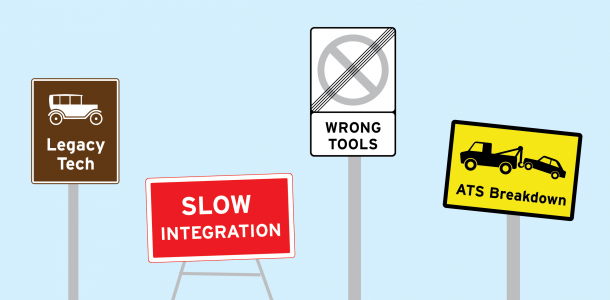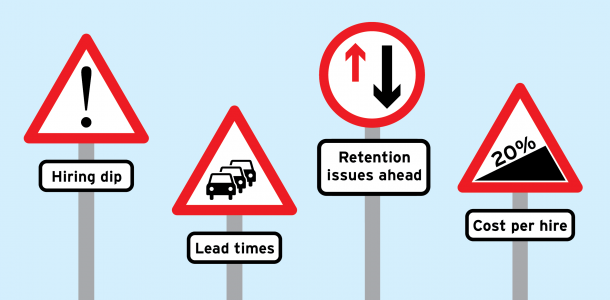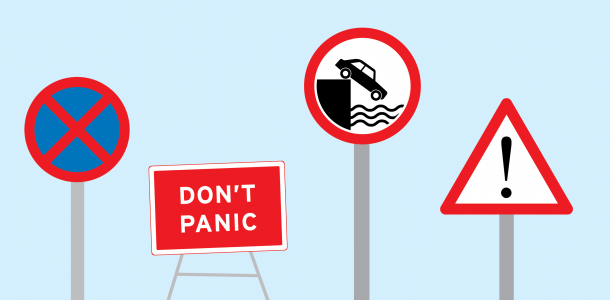Macro-level statistics and a wave of anecdotal evidence shows the recruitment market is moving into…

Kickstart 2020 and get your leadership team moving
Boost your business momentum and increase your sales and income
Last year, I developed and delivered more and more sales strategy workshops than ever before. So, I thought that, as it was the start of the year, I’d condense it all into one piece that summarises the whole process, with a few added nuggets.
Of course, it’s no substitute for a proper session. So if you like what you read, and you’d like to know more, then just drop me a note.
My approach revolves around four pillars:
Pillar 1 - What are you selling?
It might sound blindingly obvious, but most businesses have no idea what they are selling. They will have a general notion, but they often couldn’t tell somebody quickly what they offer. The old elevator pitch is never really thought through by most businesses.
Starting with that premise, it really should be easy to start thinking about the product or service you sell and how the features and benefits will work for anyone interested. I always ask the same question: can you describe what you do on one sticky note? Could you tell a stranger what you do in 30 seconds? Have you an easy-to-buy-from box that your pals could tell their networks what you do?
We are all guilty of thinking that others must know what we do – how could they not! But do we take the time to actually think about the whole sell, the ‘what are you selling’ part? I’d guess that, in most cases, the answer is no. I work on drawing out the simple things, the best bits, and – without being clichéd – finding the sizzle. This has to be the base of every new business strategy, the one that leads you to all the other phases. This will help create your hook – simple features and benefits that offer an easy start to a strategy that you can implement.
#Helpful note 1
I love to work with clients who have an open mind and positive thinking, but if you want to look at this on your own start off with Features. What is so great about the product or service? These can be simple transactions you carry out, fabulous thinking or the features your fantastic bit of tech kit delivers – these should be easy to find and think about. Then you need to think about the Benefits from these features: what helps me as a buyer/client if I use or have your service/product?
Feature – We guarantee our raincoat is storm force waterproof
Benefit – You’ll stay dry in a storm
It is really easy to forget the benefit. Sometimes you just need to blow your own trumpet.
By understanding the features/benefits you will make the How you sell and the Fame growth far easier, think about how easy it is to spread word of mouth on things you like or have enjoyed.
Pillar 2: Getting to know your target market – Who are you selling to?
I have worked with many companies over the last 14 years who have gained most of their business from pure reputation – they are the lucky ones, in some sense. But that reputation usually comes from performance, service and a strong word of mouth. Understanding who you are selling to is key to any sales performance or growth; you have to have targets or word-of-mouth brilliance.
Start off with your network. This is the low-hanging fruit. Do they know what you do? Do they have need for your service? These should include ex-colleagues, old clients, current clients, your social networks, friends and people who will become Brand fans for you (remember being able to tell them what you do in 30 seconds). It’s all about creating word of mouth, noise and potentially fame. And it shouldn’t be a one-way street: you’re not just broadcasting information at them, but interacting and engaging with them. So always find out and offer if you can help them in any way.
Then you need to think about whom you would like to work with. Make a list of clients that you think might be winnable. They have to be winnable; you’re not going to win RBS straight away. In all cases, you need to seek out the best contact. Is there a connection of a connection – someone you know who might know them? Can you find an email address? Are they on LinkedIn? – link in with them!
Once you’ve established a connection, don’t go in for the kill straight away. You need to build up your knowledge and standing with any new potential contacts. Are they prolific on social media? Are they speaking at an event? Have they written any opinion pieces or blogs? In other words, find out what makes them tick. Most business wins come from your closest network, so the more engaged people you have in that network the better.
#Helpful note 2
We all have lots of LinkedIn connections, go into your privacy settings and download your contacts – LinkedIn will give you them on excel. Then go through them and if you have time label them – Contact, Bespoke, Industry, General message whatever suits and then re-engage with your network say hello!
By increasing your word of mouth potential and giving a clear message and description of what you do, you will start to see growth of your fame and start some momentum into your process
Pillar 3: The anatomy of a sale – who, how, where
I’ve talked about what you’re selling and who you’re selling to. The hardest part is often who does the doing and how do they do it!
People are the most important part of any sales process. Getting and giving people clear action plans with realistic expectations is a must. If you don’t, everyone expects someone else to do the work. What I call the Mystery Department is suddenly expected to pick up all the work.
Calling on the Mystery Department
What is this, I hear you cry? Well every business has one. It’s the department that does all the work and actions from the strategy meeting. It exists behind an invisible door, down some forgotten corridor – perhaps it’s next to the cleaners’ cupboard. Here is where you’ll find all the doers with the initiative to handle those actions you’ve agreed to without assigning. When everyone in the meeting nods along, it’s the Mystery Dept. that will be in charge of the new business work.
Of course, when the next new business meeting comes along and you discuss how the strategy is working, you’ll find that the mystery department isn’t actually pulling their imaginary weight. Nothing has been done. Because (and this may surprise you) it turns out the Mystery Dept. is actually you. For an achievable plan, you need actionable steps – and that means names against tasks.
How you are going to deliver your plan? All my sessions include work on developing a two-page mini business plan and also an excel work sheet with action plans. It has to act as your aide memoire, when you hit the wall (which you will), it’s there to put you back on track.
#Helpful note 3
When I worked at the Guardian we had card boxes. We all filled in the notes part and put as much detail as we could about the person at any given company we either worked with or wanted to work with. They could be simple notes about the person – did they like cricket, did they have kids, etc, – to full notes on what kind of response they expected from their advertising. It was easy to fill a card because we would speak to them. You know, actually phone them!
This is where most people shrink back into their chair. Phoning? No chance. I’m not doing that! It is often the biggest stumbling block with sales strategies as people don’t want to call anyone any more. It puts the fear of god into most management teams. And, as vital as it is, it’s not the only thing. We have lots more ways we can contact and raise our Fame levels with people. It is about having a good plan and only giving the phone calling to people who want to do it (they might even be external!)
Pillar 4: Getting famous for what you do
As you start to build your external profile, go through your actions and begin your storytelling. From there, the fame will start to grow. Your social channels are made for increasing your Fame, as are your current client base – ask yourself do they really know what you do? Collateral is important as is a good website (it should be your engine where you deliver and share a range of content that raises your head above the bar and improves your word of mouth and opinion about you) but the key is continuous networking and storytelling. It is something you should always be doing in your business, and not just when it is quiet. There are lots of techniques and tricks of the trade and Fame is only useful if you follow it up and set yourself objectives and measure them.
As your reputation grows you will start to notice as random people in your network will start to tell you “I see you’re on LinkedIn a lot” people you have forgotten about will start asking “ to grab a coffee” with you and your website will start to get more traffic.
#Helpful note 4, 5, 6, 7, 8, 9 and 10
And finally some final helpful notes that you should help!
4# Goal setting – What are you trying to achieve from your sales strategy?
5# Measurement – Put some form of measurement into your strategy
6# Process and preparation– There has to be some plan, this plan allows you to measure the success and allocate roles. It also allows you to climb the wall when things get tough, as often they do!
7# Storytelling – You need to share with people the adventures on your island! Only you can do that
8# Lead generation – Understand where they come from, what you do when you get them and how you maximise the leads you already have.
9# Testimonials – People buy from people they trust, you must get testimonials that allow you to get your brilliance out to the marketplace – then share what the benefits and results were for those clients.
10# Responsibility – Management teams need to take responsibility as leaders of the business, sales are the energy of all business – without them you will lose power!
What people say about our sales strategy business support
“Thanks for the much needed clarity Tony. You have helped us significantly over the last year in particular, with pretty rapid results. Every day is a school day!”
“You gave us simple techniques via proven processes”
“Every time I speak to you I get some really useful actions, from how we pitch to what our sales deck should look like”
“You kept on at me about sales, the need for a proper plan – I kept just using a cold caller with no plan – spent a fortune on three or four and got nothing. You sat me and my management team down and gave us a plan, made me stick to it and surprise surprise it worked!”



